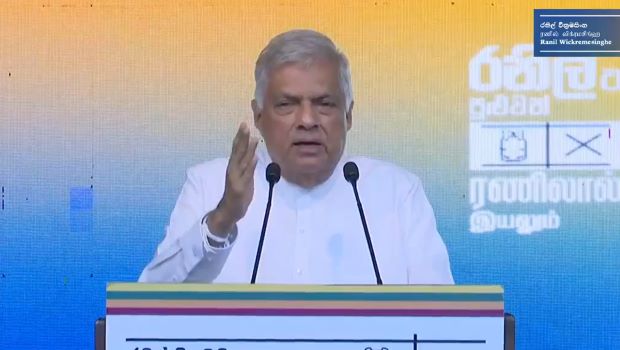COLOMBO – Sri Lanka President Ranil Wickremesinghe said a strong exchange rate has reduced the cost of living a little, and he will continue to work for a strong rupee if elected for a second term.
“When I strengthen the rupee, your burden of living will become lighter,” President Wickremesinghe told a rally in Gampola in the central province, pledging to make the rupee strong “in the next five years”.
Wickremesinghe was echoing the words, Goh Keng Swee, the economic architect of Singapore, gave then President J. R. Jayewardene in 1980 when the currency was under pressure and the country was pushed into an IMF program.
Goh warned JR not to depreciate the currency as the ‘competitive exchange rate’ became fashionable after the collapse of the Bretton Woods in 1971 and the IMF Second Amendment left Sri Lanka without a credible anchor.
Sri Lanka’s macroeconomists ignored the advice. To this day Singapore does not have a policy rate nor an ‘independent’ central bank for macroeconomists to print, and instead targets the exchange rate (external anchor) every three months.
Unlike macroeconomists who believe 5% inflation a year (price pressure) is absolutely required for growth, the Monetary Authority of Singapore (MAS), does not have a policy rate, for economic bureaucrats to print money through open market operations.
Singapore targets the exchange rate to keep inflation near zero in the belief that monetary stability is required for growth and to stop social unrest.
“The prevailing rate of appreciation of the policy band will keep a restraining effect on imported inflation as well as domestic cost pressures, and ensure medium-term price stability,” the MAS said in its last policy statement.
“MAS will therefore maintain the prevailing rate of appreciation of the S$NEER policy band. There will be no change to its width and the level at which it is centred.”
Macroeconomists of independent central banks that target 5% or higher inflation with a policy rate and turfs out politicians to the opposition, and the poor to the Middle East on the other hand believe that a 5% rise in the cost of living is needed every year to boost growth.
President Wickremesinghe has already given powers to the central bank to create 5% inflation (a domestic anchor) though he wants to keep a strong exchange rate (external anchor) to reduce inflation like Singapore.
Wickremesinghe said he took over as president there was no future for the country.
“I went to the IMF, I talked to all the global leaders that I knew and saved the country,” he said, elaborating that he was told the debt burden was too high and not to take debt more than 5% of GDP. He said he was told not to print money because the rupee would fall even more from 370 to the dollar. “I was told not to take loans from banks because they will collapse.”
He said as there was nothing else to do, he raised VAT, and even with difficulty he knew Sri Lanka had to do this to come out of the crisis.
“I know the difficulty you faced. The rupee had fallen from 185 to 370. The rupee had depreciated 50%. The price of goods went up 100%,” he noted, adding, “You lived with difficulty. You had to pawn your jewellery. You got into debt. I know this.”
Acknowledging that the income of the average person did not go up and when the taxes were imposed it fell further, he said, “But I knew when I did that the rupee would strengthen.”
He said the rupee strengthened, the gas price fell, the diesel price fell, some prices fell only 10% others 40”%. “Then the economy started to run,” he noted, claiming, “I have brought my plan for the future. We can fix this country.”
Sri Lanka’s central bank under Governor Nandalal Weerasinghe allowed the rupee to appreciate to 300 to the US dollar under a broadly deflationary policy. It is not possible to collect reserves without running a deflationary policy.
Under a deflationary policy of selling down central bank securities (like selling MAS securities to banks) the exchange rate can be strengthened or weakened by changing the intervention rate.
-economynext.com



Comments are closed, but trackbacks and pingbacks are open.